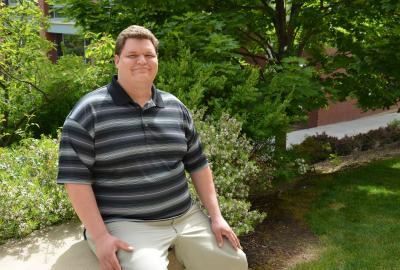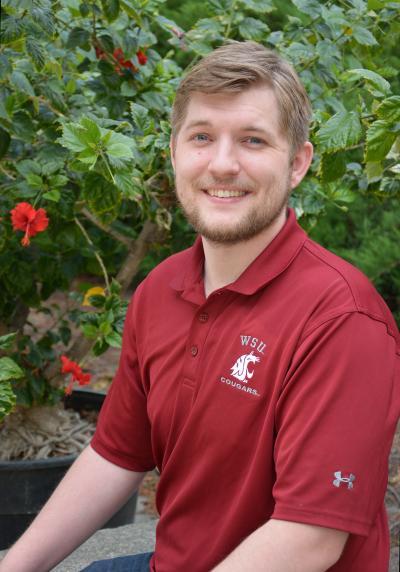PULLMAN, Wash. — Native American veterans battling Post Traumatic Stress Disorder find relief and healing through an alternative treatment called the Sweat Lodge ceremony offered at the Spokane Veterans Administration Hospital.
In the Arizona desert, wounded warriors from the Hopi Nation can join in a ceremony called Wiping Away the Tears. The traditional cleansing ritual helps dispel a chronic "ghost sickness" that can haunt survivors of battle.
These and other traditional healing therapies are the treatment of choice for many Native American veterans, – half of whom say usual PTSD treatments don't work – according to a recent survey conducted at Washington State University. The findings will be presented at the American Psychological Association conference in Washington D.C. this August.
The study is available online at https://www.surveymonkey.com/s/nativeveterans.
Led by Greg Urquhart and Matthew Hale, both Native veterans and graduate students in the College of Education, the ongoing study examines the attitudes, perceptions, and beliefs of Native American veterans concerning PTSD and its various treatment options. Their goal is to give Native veterans a voice in shaping the types of therapies available in future programs.
"Across the board, Native vets don't feel represented. Their voices have been silenced and ignored for so long that they were happy to provide feedback on our survey," said Hale.
Historically, Native Americans have served in the military at higher rates than all other U.S. populations. Veterans are traditionally honored as warriors and esteemed in the tribal community.
A 2012 report by the Department of Veterans Affairs showed that the percentage of Native veterans under age 65 outnumbers similar percentages for veterans of all other racial groups combined.
The WSU survey provides a first-hand look at the veterans' needs, but more importantly, reveals the unique preferences they have as Native American veterans, said Phyllis Erdman, executive associate dean for academic affairs at the college and mentor for the study.
Cultural worldview
Urquhart said many Native veterans are reluctant to seek treatment for PTSD because typical western therapy options don't represent the Native cultural worldview.
"The traditional Native view of health and spirituality is intertwined," he explained. "Spirit, mind, and body are all one – you can't parcel one out from the other – so spirituality is a huge component of healing and one not often included in western medicine, although there have been a few studies on the positive effects of prayer."
For many years, the U.S. government banned Native religious ceremonies, which subsequently limited their use in PTSD programs, said Urquhart. Seeking to remedy the situation, many Veterans Administration hospitals now offer traditional Native practices including talking circles, vision quests, songs, drumming, stories, sweat lodge ceremonies, gourd dances and more. Elders or traditional medicine men are also on staff to help patients process their physical and emotional trauma.
"PTSD is a big issue and it's not going away anytime soon," said Hale who identifies as Cherokee and was a mental health technician in the Air Force.
Urquhart, who is also Cherokee and developed mild symptoms of PTSD after a tour as a cavalry scout in Iraq, said there have been very few studies on Native veterans and PTSD. He and Hale designed their survey to be broader and more inclusive than any previous assessments. It is the first to address the use of equine therapy as a possible adjunct to both western treatments and Native ceremonial approaches.Standard treatments disappointing
So far, 253 veterans from all five branches of the military have completed the survey, which includes 40 questions, most of them yes or no answers. It also includes an open-ended section where participants can add comments. The views reflect a diverse Native population ranging from those living on reservations to others who live in cities.
The majority of survey takers felt that "most people who suffer from PTSD do not receive adequate treatment," said Urquhart. For Native veterans who did seek standard treatment, the results were often disappointing. Sixty percent of survey respondents who had attempted PTSD therapy reported "no improvement" or "very unsatisfied."
Individual counseling reportedly had no impact on their PTSD or made the symptoms worse for 49 percent of participants. On the other hand, spiritual or religious guidance was seen as successful or highly successful by 72 percent of Native respondents. Animal assisted therapy – equine, canine, or other animals – was also highly endorsed.
"The unique thing about equine therapy is that it's not a traditional western, sit-down-with-a-therapist type program. It's therapeutic but doesn't have the stigma of many therapies previously imposed on Native Americans," said Urquhart.
Strongly supportive of such efforts, Erdman is expanding the long-running WSU Palouse Area Therapeutic Horsemanship (PATH) program to include a section open to all veterans called PATH to Success: A Warrior's Journey.

Urquhart is a Native veteran and graduate student in the WSU College of Education.
(Photo Credit: Rebecca E. Phillips)
Giving veterans a voice
Urquhart, Hale, and teammate, Nasreen Shah say their research is gaining wide support in Native communities throughout the nation.
The team plans to distribute the survey results to all U.S. tribes, tribal governments, Native urban groups, and veteran warrior societies. They also hope the departments of Veterans Affairs and Indian Health Services will take notice and continue to incorporate more traditional healing methods into their programs.
As one Iroquois Navy veteran commented on the survey, "Traditional/spiritual healing can be very effective together with in depth education and background in modern treatment methods."
A Nahua Army veteran agreed, writing, "Healing ceremonies are absolutely essential, as is story telling in front of supportive audiences. We need rituals to welcome back the warriors."

Hale is a Native veteran and graduate student in the WSU College of Education.
(Photo Credit: Rebecca E. Phillips)
Source: Washington State University